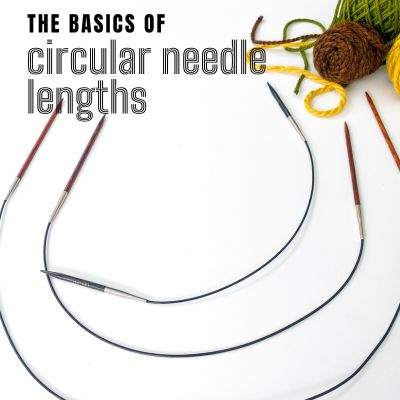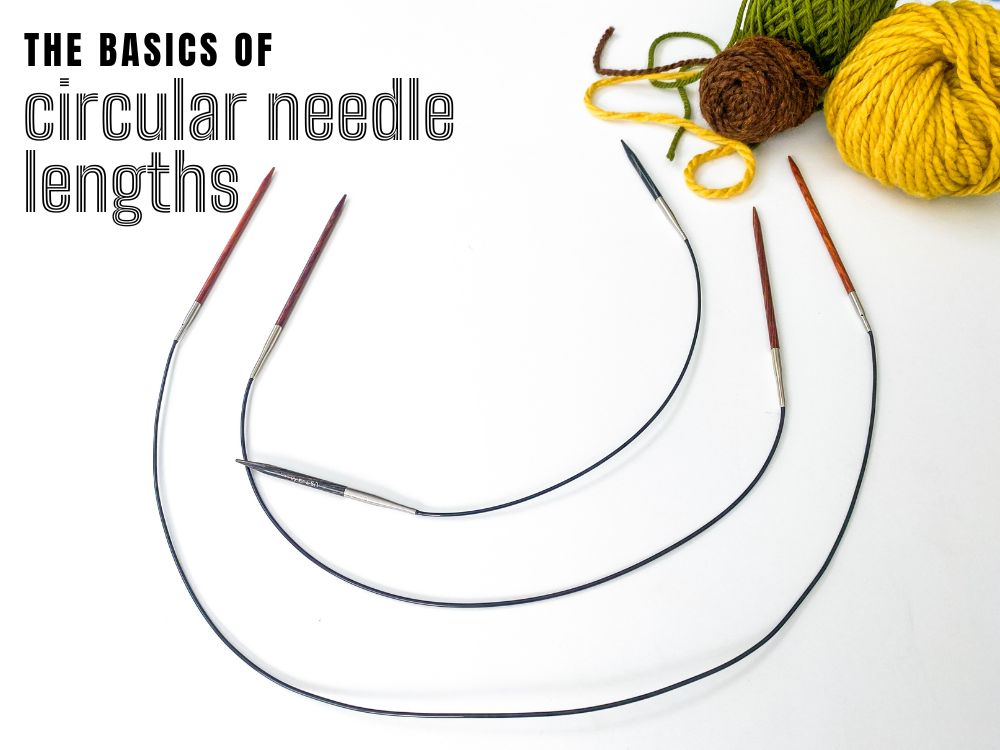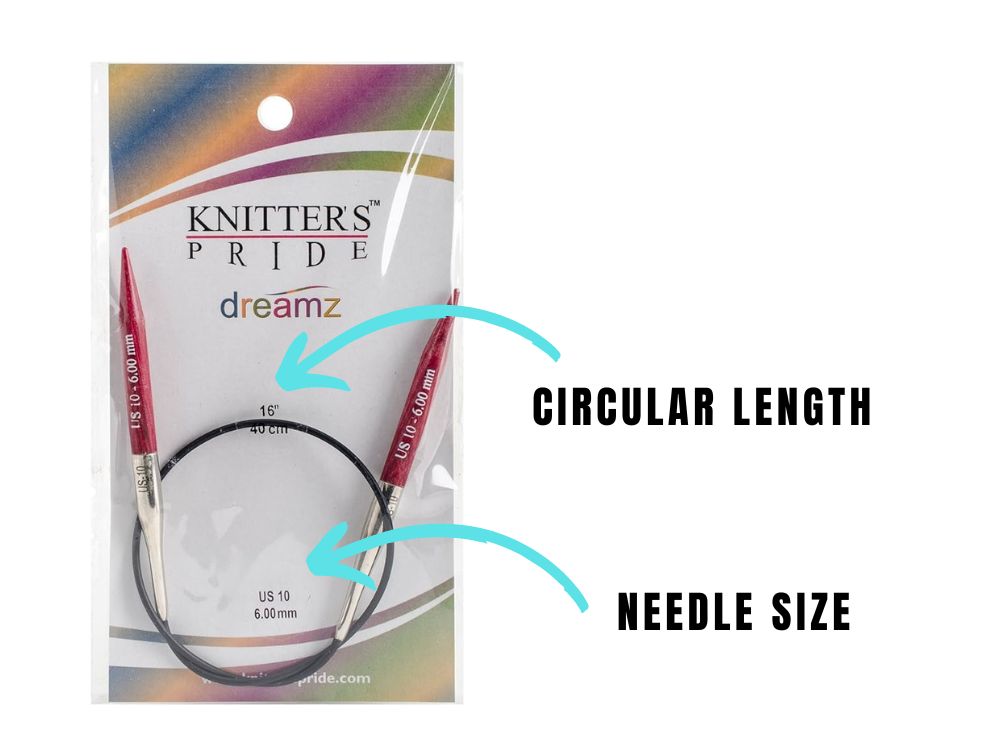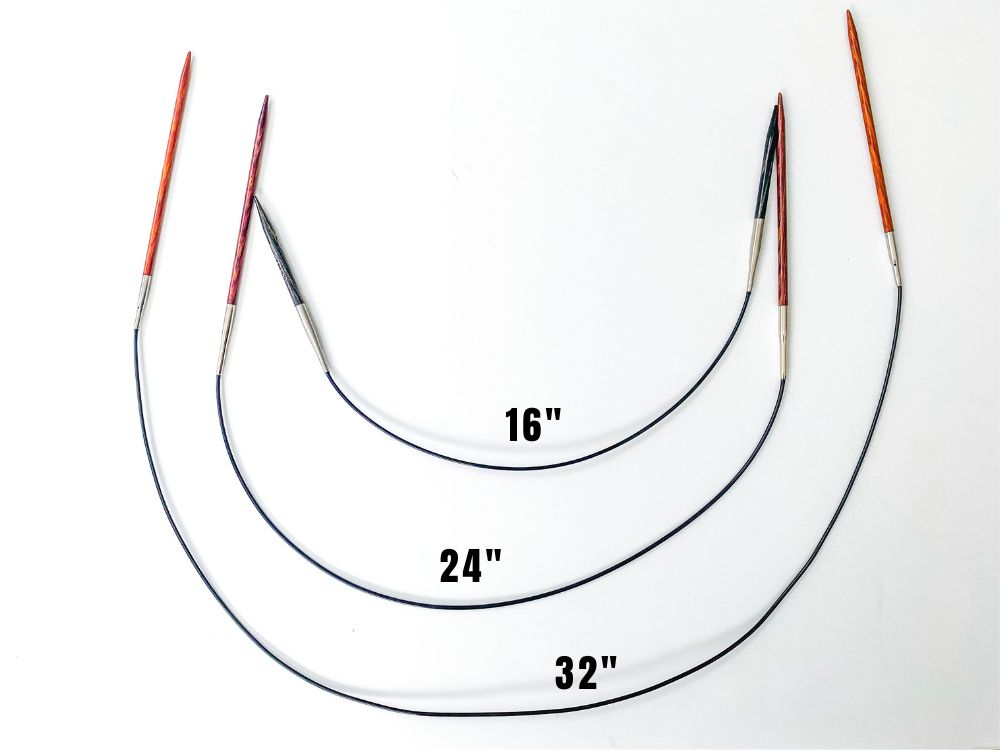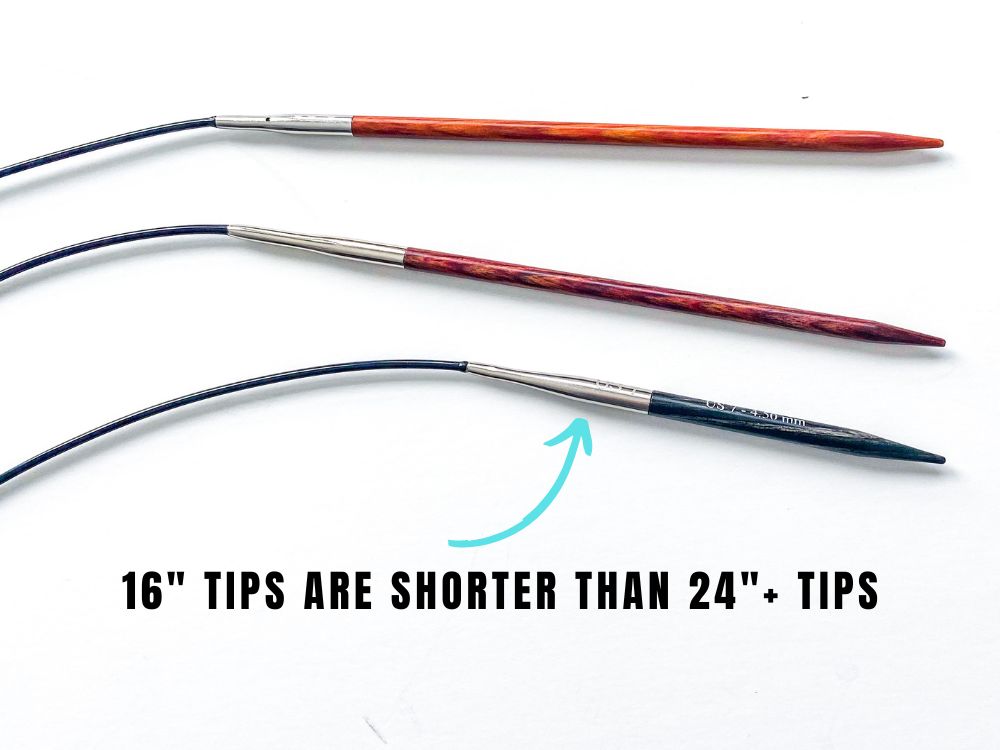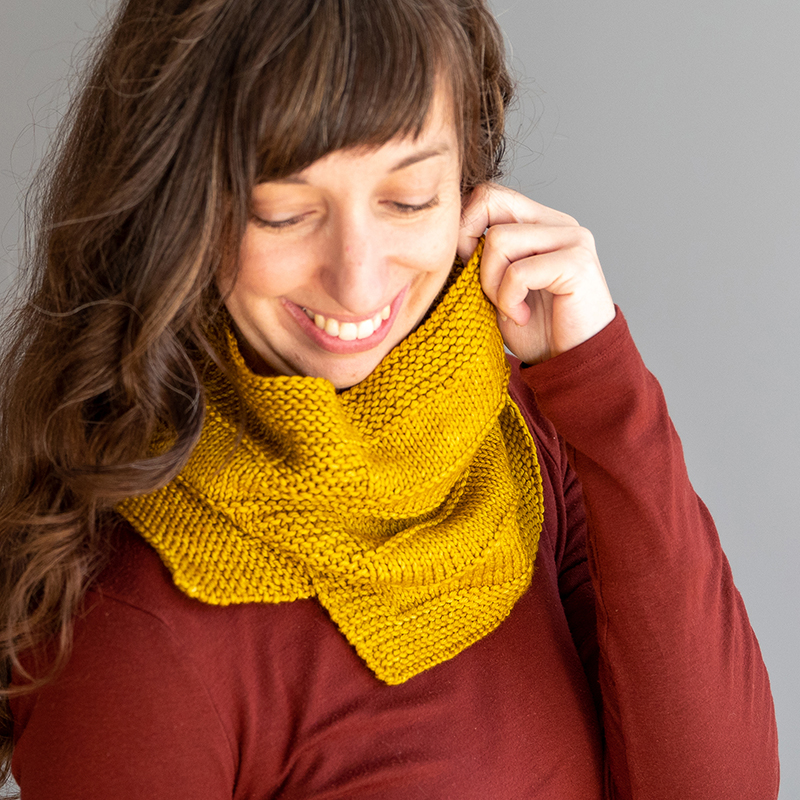I’m a big fan of circular knitting needles. Whether or not I’m knitting in the round or flat, I’m always on a circular needle. But it can be a bit overwhelming for beginner knitters or those new to circulars because there are SO many different types of needles and lengths available. So I thought it would be helpful to outline some basic information about circular needle lengths should you be new to this circular world of knitting!
Circular needles have 2 important measurements
When purchasing circular needles, the important thing to know is that there are 2 measurements. One is the actual needle size – so for example, US 10/6mm. That is the measurement of the needle tip, just like in any other type of knitting needle. And then the other measurement is the length of the circular which is measured from tip-to-tip. So a 16″ circular measures 16″ from one tip of one of the needles all the way to the other tip of the other needle (it’s not the measurement of the cord).
So when purchasing a circular needle, you need to know not only what size needle you need but also what length that circular should be – this information should be listed in the pattern.
The length circular corresponds to the circumference of your project
Circulars come in a handful of different lengths, with the most common being: 16″, 24″ and 32″. Below is an example of these 3 circular needle lengths:
Other circular lengths that are often available are 9″ and 40″ (although much longer lengths are often available too!). A pattern will call for a particular length based on what the circumference is or will be of the project you are working on. Typically your circular length should be less than the circumference of the project. But not so much shorter that the stitches become really scrunched up (I have 1 exception to this rule which I note at the bottom of this post!). Let me give you a couple of examples for this:
Example 1: A kids sweater
If you are working on a kids pullover sweater whose finished body circumference is 26″, then you will want to use a 24″ circular. A 32″ circular would be too big since the circular shouldn’t be larger than the body’s circumference (of 26″), and a 16″ would be too small – the stitches would be really scrunched up.
Example 2: An adult hat
A typical adult hat has a finished circumference of 18-22″, so you will want to use a 16″ circular. A 24″ circular would be too big (since the largest adult hat is typically no bigger than 22″). Some manufacturers make circulars less than 16″, such as a 9″ or 12″. And for those, the stitches would be very scrunched up.
When using a circular needle for working flat, it’s similar but you can use a circular whose length is longer than the project’s width (within reason – using a 40″ long circular on a skinny scarf may not feel very comfortable!). But just like when working in the round, it’s not recommended to use a circular whose length is shorter than the project’s width (it just isn’t as comfortable and the stitches get too scrunched up).
For further guidance, here is a list of needle sizes and some typical projects that call for those length circulars:
9″ circulars
- In the round sleeves
- Baby hats
- Socks
16″ circulars
- Adult hats
- Neckwarmer-style cowls
- Armhole trim in vests
- In the round baby pullover sweaters
24″ circulars
- Beginning of a top-down adult sweater
- Beginning of shawls
- Kids sweaters
- Small flat knitting (like a scarf)
- Short/medium cowls
32″ circulars
- Body of adult sweater
- Shawls
- Infinity-style long cowls
- Baby/lap blankets
- Used for magic loop method
40″ circulars
- Larger blankets
- Body of adult sweater in sizes 50″+
- Used for magic loop method
A 16″ circular has a smaller tip than larger length circulars
16″ circulars have smaller tips, as illustrated in the photo below:
This shorter length is what allows for a 16″ circumference – the regular tips would be too long and not allow for the circular to make a 16″ circle. This is also why interchangeable circular needle sets come in 24″+ lengths or you have to purchase a special 16″ only set (since the tips are different). You can learn more about interchangeable sets in this blog post.
Shorter length tips can sometimes cause discomfort
One side effect of the shorter length of 16″ circulars (or the even shorter 9″ circulars) is that they can cause some discomfort in your hands/wrists a bit more than 24″ or higher lengths. I fall in this group! The shorter tip means there is less needle to grasp when knitting and, depending on how you typically hold your needles, this may cause some discomfort for some people. For some people, 16″ is perhaps not ideal but doable, but 9″ is just way too short and uncomfortable. But I have also known some knitters who absolutely love the 9″ circulars and have no problems whatsoever. So it’s very subjective, but worth noting.
Some alternatives to short circulars are the Magic Loop Method (which I talk about in this post) or using 2 24″ circulars at one time (here’s a tutorial from Berroco about that method).
Some manufacturers use 29″ instead of 32″
If your pattern calls for a 32″ circular but the brand you want to use only has 24″, 29″ or 36″, then you can use the 29″ instead of the 32″ (they are often used interchangeably). This is often the case with the Clover brand of circulars.
When knitting flat, use 24″ or higher
Circular needles are great for flat knitting (it’s not just for in the round!). Because of how short the 16″ length tips are on a circular, it’s typically the most comfortable (on your hands and in terms of working the stitches) to use a 24″ or longer circular when knitting flat (unless your pattern tells you otherwise). For example, I suggest a 24″ circular when working a scarf back and forth or when swatching. For top-down cardigans, I usually start on a 24″ circular and then as the sweater grows and I gain more stitches, I eventually switch to a 32″ circular.
My one exception to the circular length rule…
So related to my tip up above about always choosing a circular length that is less than the circumference of your project, there is a circumstance where I break this rule and that is when I’m working short cowls that are slightly less than 24″ in circumference (say, 23″ or so). In both of the cowls below, the circumference is closer to 23″, but because the bottoms are split-hem (so they’re worked flat to begin with and then joined in the round), I could get away with using a 24″ for the body without feeling like I was stretching out the stitches. It would have felt tight had I cast-on and then joined in the round, but because they weren’t joined right after cast-on, the 24″ circular worked just fine for me.
I hope this basic information about circular needle lengths has been helpful! If you have any questions, feel free to reach out.

